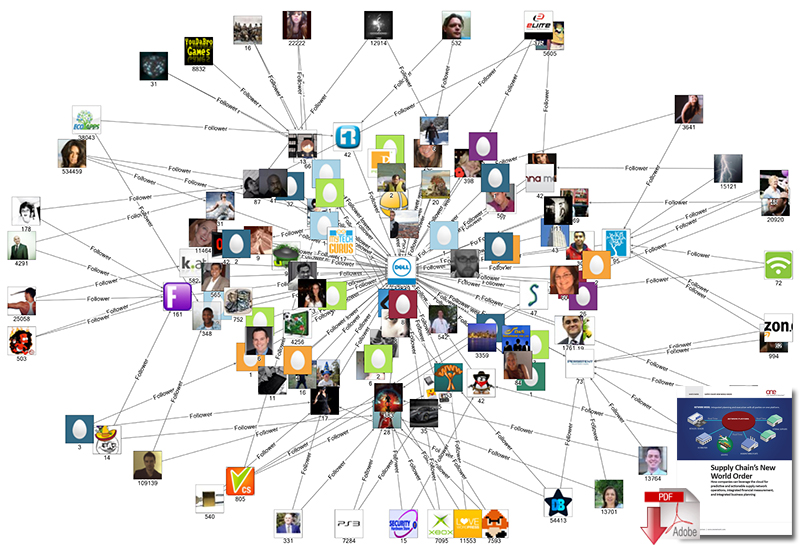Why Supply Chains Should Be More Socially Engaged
The
trouble is that historically companies have been reluctant to share information
about their suppliers with their customers or the general public. By
Joe Bellini

How companies can leverage the cloud for predictive and
actionable supply network operations, integrated financial measurement, and
integrated business planning.
September 09, 2014
No company has ‘truly’ modeled the full relationship set between
how companies interact with other companies upstream and downstream in the
supply chain.
Some of the largest companies in the world struggle to maintain
accurate master data about their suppliers.
Even companies who have invested in building an accurate
database of their direct suppliers know very little about the next tier of
suppliers upstream in the supply chain.
As a result, when tragedy strikes like an earthquake affecting
Japan or flooding rains overwhelming Bangkok, automakers and electronics
manufacturers are unable to identify which of the suppliers upstream in their
value chain may have been impacted.
Or a personal health situation arises
like a batch of peanut butter becoming contaminated with salmonella or
children’s toys being contaminated with lead paint, where the regulators have
difficulty identifying the source of the problem several tiers upstream in the
supply chain.
The problem has been compounded in recent years as many of the
world’s high tech, automotive, aerospace and consumer products leaders have
outsourced design, assembly, logistics and sourcing activities to Tier 1
suppliers.
It is increasingly common to find that the company whose brand
name is on a product never actually takes inventory of the item before it is
sold to a customer.
When supply disruptions occur the
brand owner, having outsourced its bill of materials to a Tier 1 supplier,
lacks visibility into which companies in its upstream supply chain might have
been impacted.
“The supply network
application of the Enterprise Social Graph is
thus somewhat similar to how Facebook and LinkedIn model their social
networks.”

A social graph for the supply chain should visually depict all
the linkages between buyers and suppliers throughout the world. Thus when there
is a massive recall required, as in the recent ignition switch problems at GM,
identifying the supply network and drilling through based on also having full
track-and-trace visibility to the items affected by the recall becomes a
standard capability.
The trouble is that historically companies have been reluctant
to share information about their suppliers with their customers or the general
public.
And while we’ve been somewhat focused on direct network
participants, indirect participants like banks that specialize in trade finance
or insurers that specialize in trade credit could also be modeled as part of
the supply network graph.
Visibility across the network into the relationships between
importers, exporters, buyers and sellers of goods is a key advantage when
processing millions of letters of credit, foreign exchange transactions and
insurance policies.
In addition, 3PL companies such as
DHL, FedEx and UPS should have a vested interest in becoming a
key capability within a supply network social graph.
Given their extensive reach into multiple vertical industries,
understanding the commercial relationships between buyers and sellers at
multiple tiers of the supply chain should be central to their business
strategies.
The supply network application of the
ESG is thus somewhat similar to how Facebook andLinkedIn model
their social networks.
The Enterprise Social Graph (ESG) that we
need would model the full network as a ‘web’ of connections; from the OEMs that
design and manufacture product, to the contract manufacturers who build to the
OEM specs, to the suppliers who provide the components, to the direct or
indirect materials procured for manufacturing or packaging, to the ingredients
used to make the product, to the various logistics hubs to move finished
product to market, and finally to the retail customer.
This is in contrast to the to the one-off relational database
integrations in a traditional ERP deployment.
I think we are much closer to this type of ESG…what do you
think?
Related: The Social Side of Supply
Chain Management
No comments:
Post a Comment